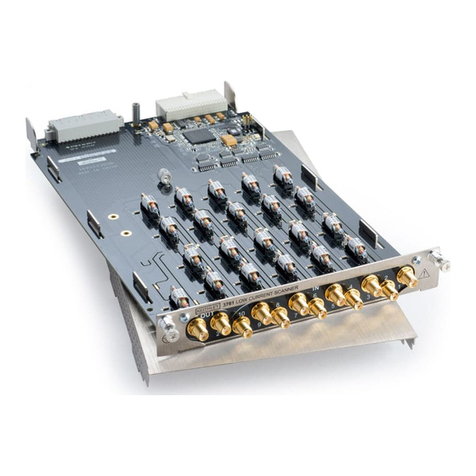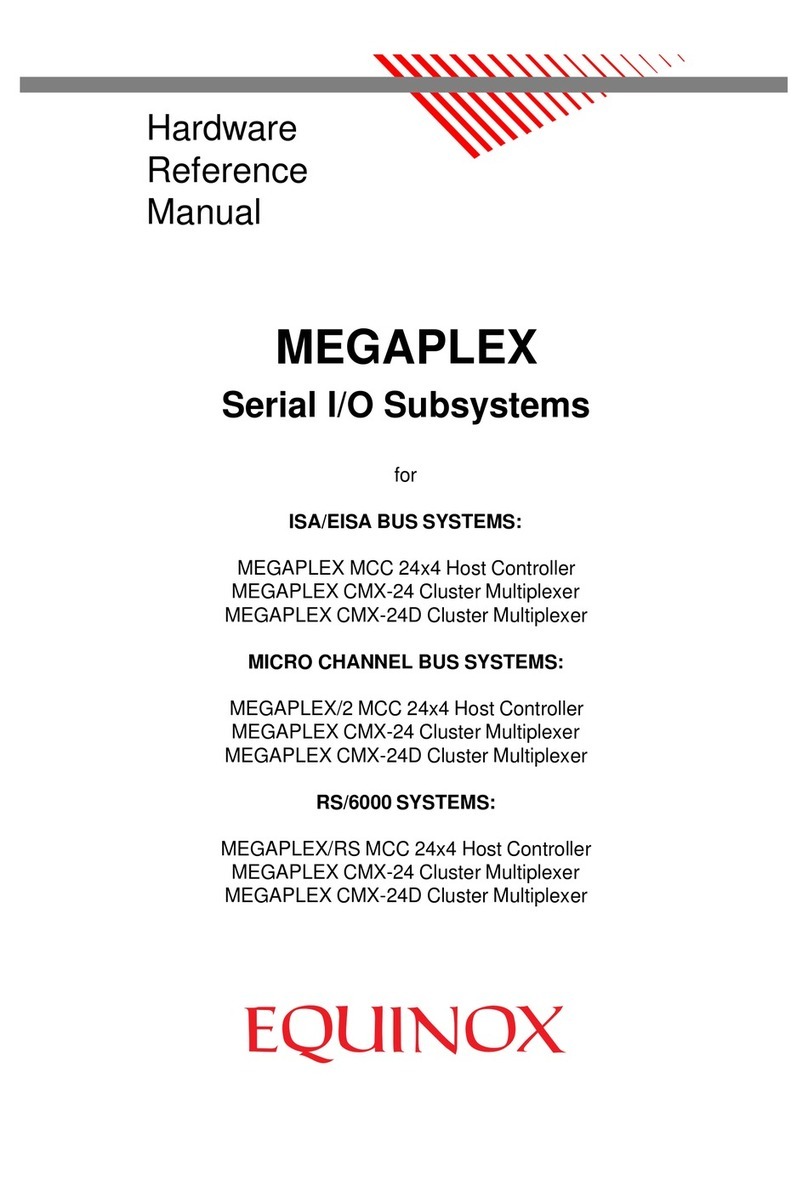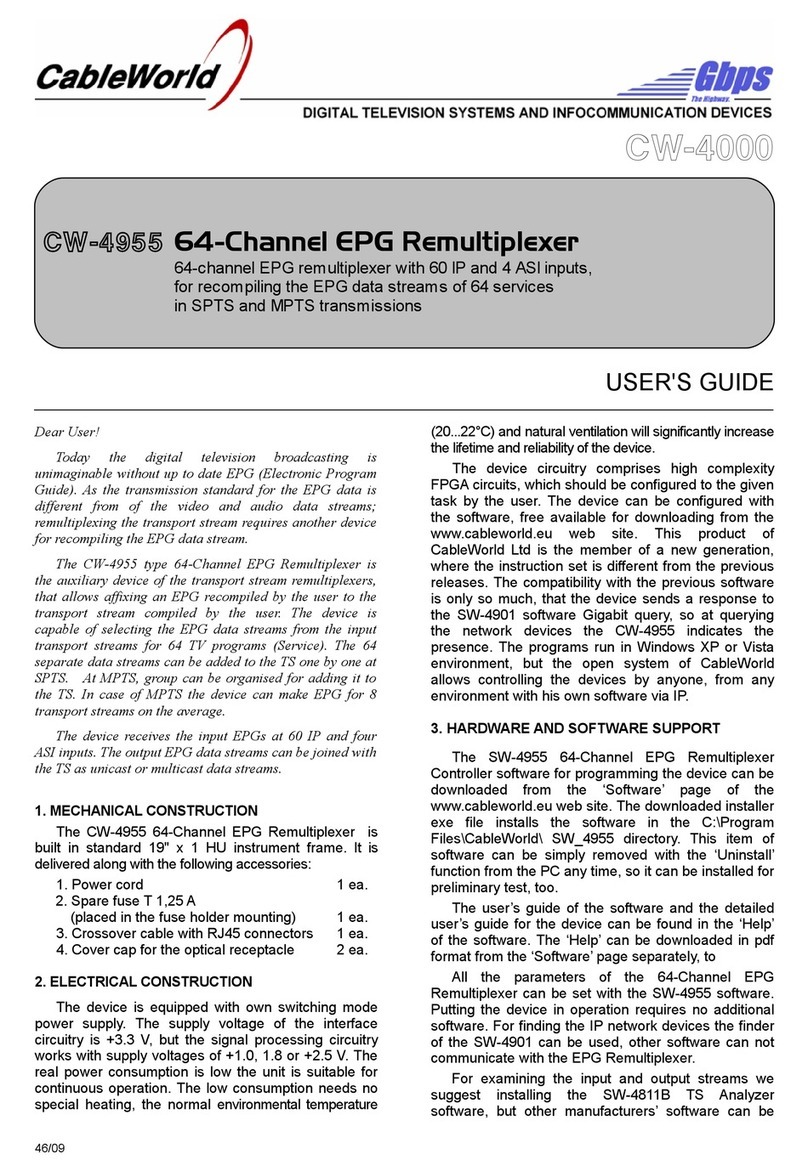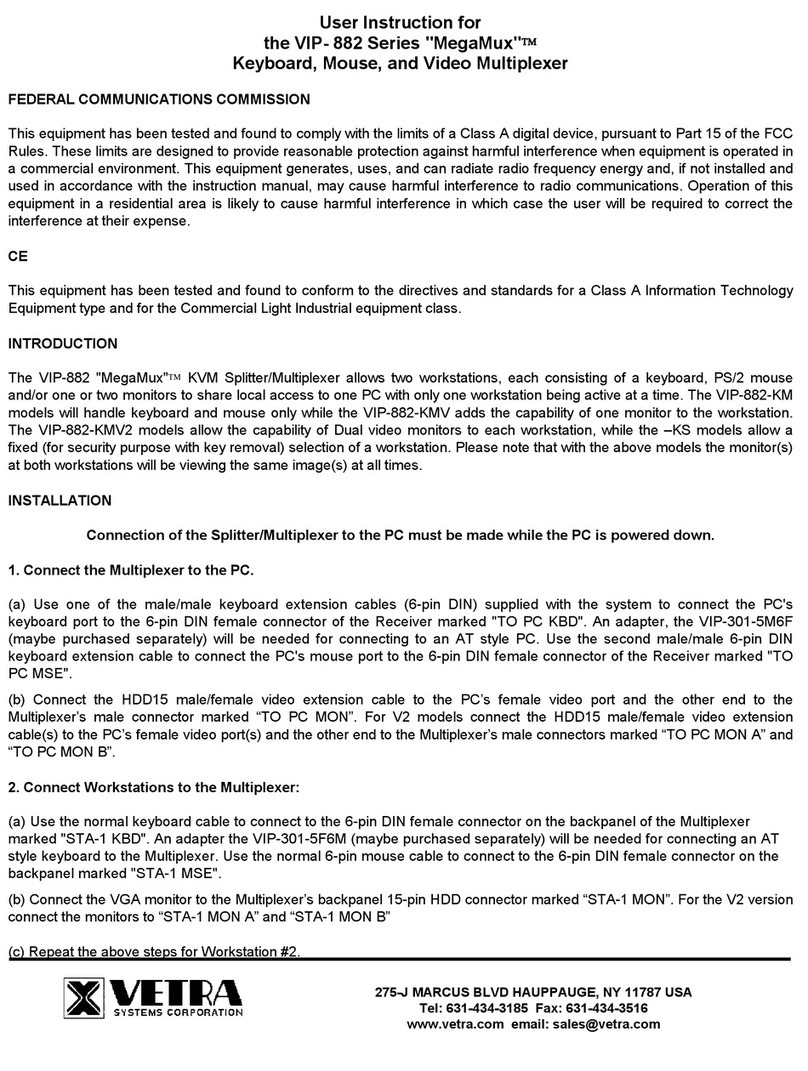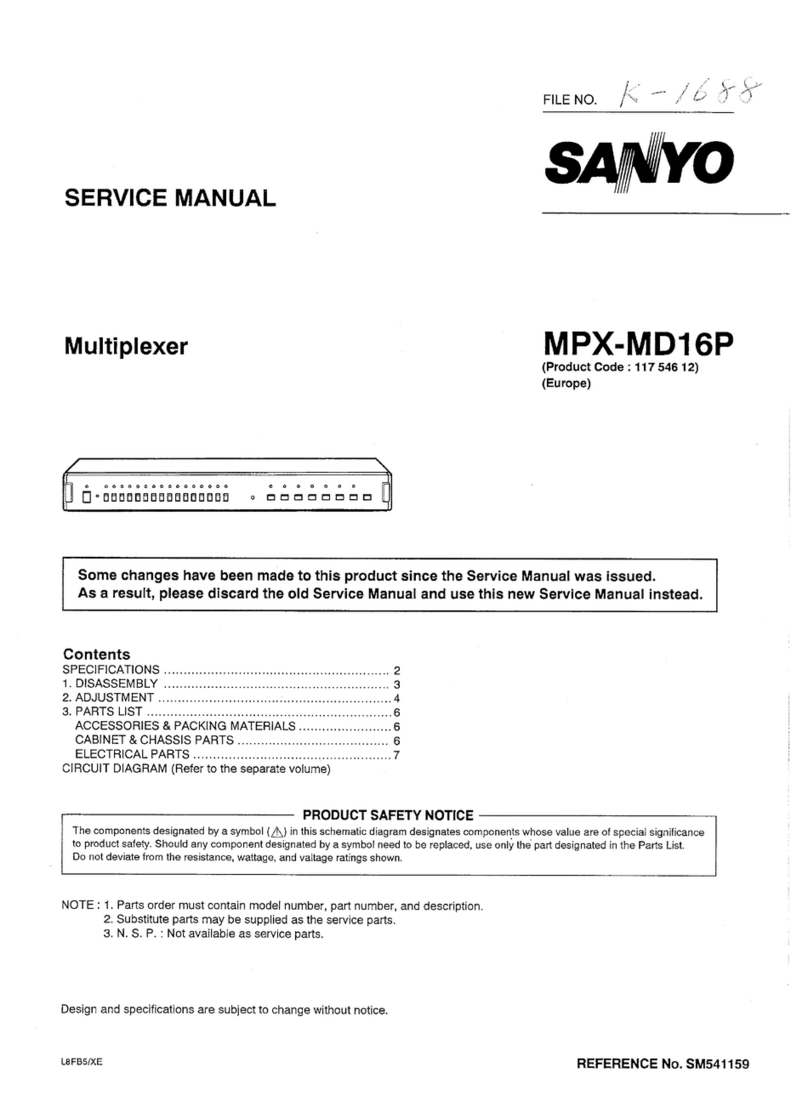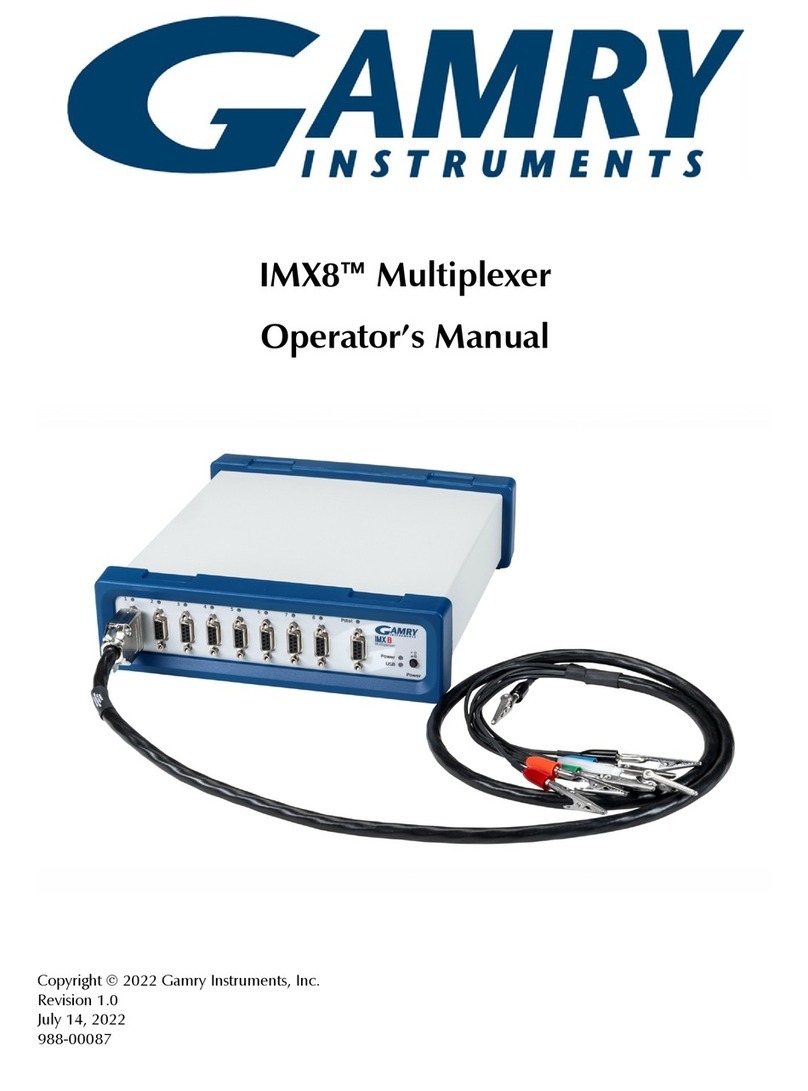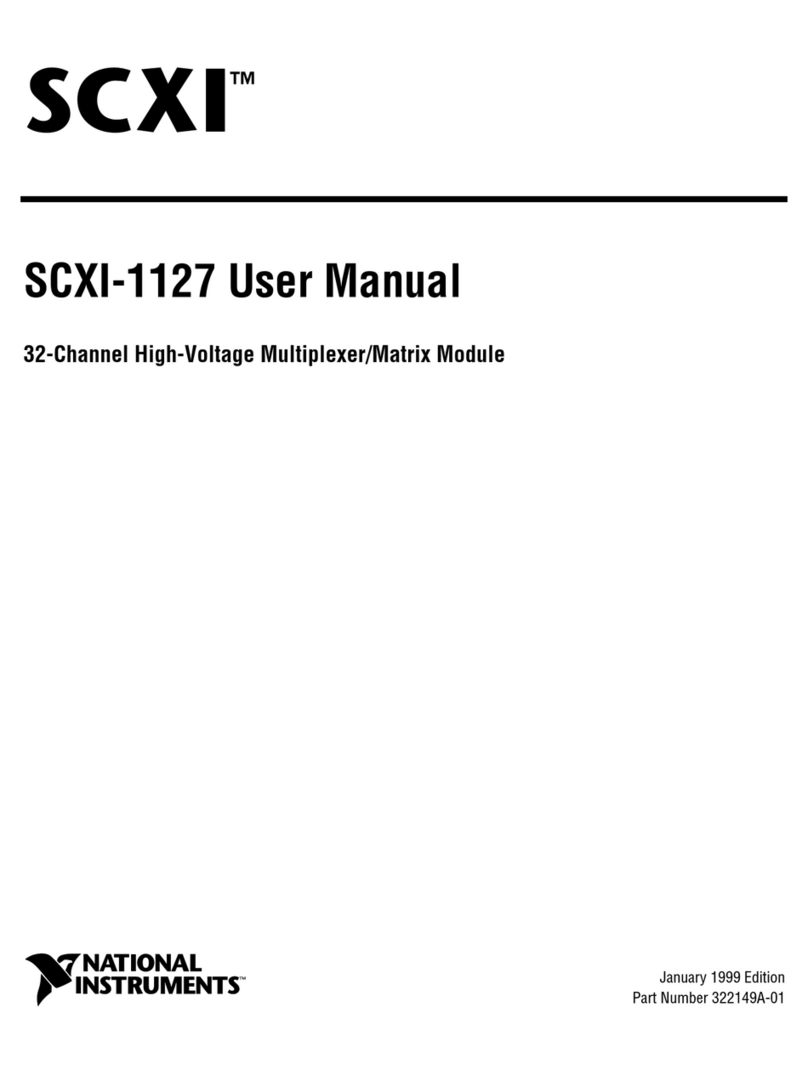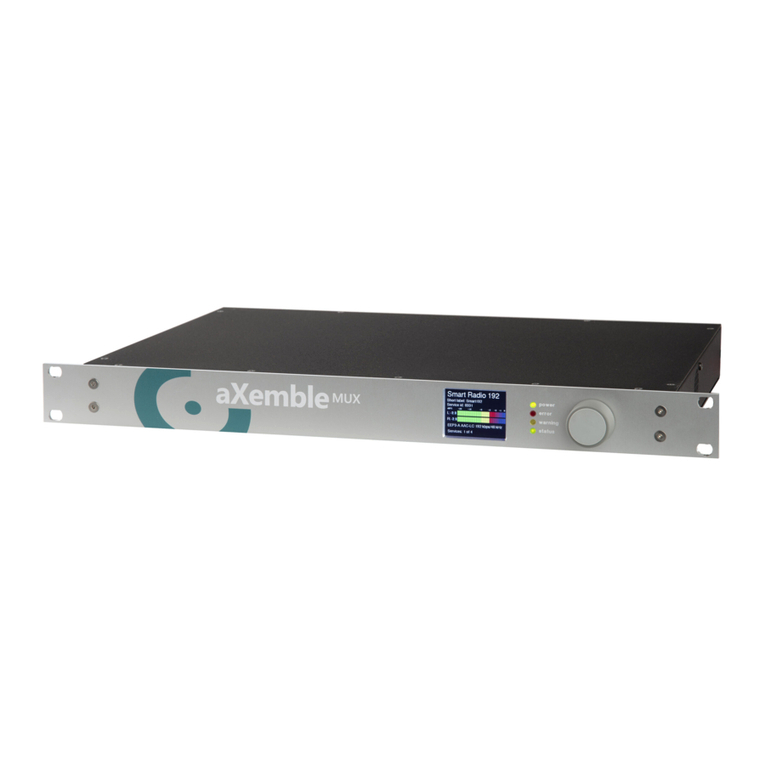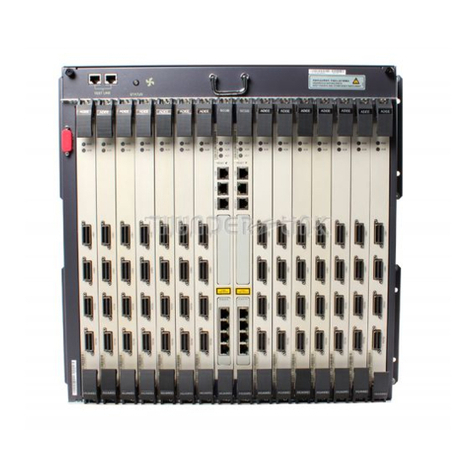Keithley 7017 User manual

WARRANTY
Keithley Instruments, Inc. warrants this product to be free from defects in material and workmanship for a period of 1 year from date of
shipment.
Keithley Instruments, Inc. warrants the following items for 90 days from the date of shipment: probes, cables, rechargeable batteries,
diskettes, and documentation.
During the warranty period, we will, at our option, either repair or replace any product that proves to be defective.
To exercise this warranty, write or call your local Keithley representative, or contact Keithley headquarters in Cleveland, Ohio.You will
be given prompt assistance and return instructions. Send the product, transportation prepaid, to the indicated service facility. Repairs
will be made and the product returned, transportation prepaid. Repaired or replaced products are warranted for the balance of the origi-
nal warranty period, or at least 90 days.
LIMITATION OF WARRANTY
This warranty does not apply to defects resulting from product modification without Keithley’s express written consent, or misuse of
any product or part. This warranty also does not apply to fuses, software, non-rechargeable batteries, damage from battery leakage, or
problems arising from normal wear or failure to follow instructions.
THIS WARRANTY IS IN LIEU OF ALL OTHER WARRANTIES, EXPRESSED OR IMPLIED, INCLUDING ANY IMPLIED
WARRANTY OF MERCHANTABILITY OR FITNESS FOR A PARTICULAR USE. THE REMEDIES PROVIDED HEREIN ARE
BUYER’S SOLE AND EXCLUSIVE REMEDIES.
NEITHER KEITHLEY INSTRUMENTS, INC. NOR ANY OF ITS EMPLOYEES SHALL BE LIABLE FOR ANY DIRECT, INDI-
RECT, SPECIAL, INCIDENTAL OR CONSEQUENTIAL DAMAGES ARISING OUT OF THE USE OF ITS INSTRUMENTS AND
SOFTWARE EVEN IF KEITHLEY INSTRUMENTS, INC., HAS BEEN ADVISED IN ADVANCE OF THE POSSIBILITY OF
SUCH DAMAGES. SUCH EXCLUDED DAMAGES SHALL INCLUDE, BUT ARE NOT LIMITED TO: COSTS OF REMOVAL
AND INSTALLATION, LOSSES SUSTAINED AS THE RESULT OF INJURY TOANY PERSON, OR DAMAGE TO PROPERTY.
Keithley Instruments, Inc.
• 28775 Aurora Road • Cleveland, OH 44139 • 216-248-0400 • Fax: 216-248-6168 • http://www.keithley.com
CHINA: Keithley Instruments China
•Yuan Chen Xin Building, Room 705 • No. 12Yumin Road, Dewei, Madian • Beijing, China 100029 • 8610-2022886 • Fax: 8610-2022896
FRANCE: Keithley Instruments SARL
• BP 60 • 3 allée des Garays • 91122 Palaiseau Cédex • 31-6-0115155 • Fax: 31-6-0117726
GERMANY: Keithley Instruments GmbH
• Landsberger Straße 65 • 82110 Germering • 49-89-849307-0 • Fax: 49-89-84930759
GREAT BRITAIN: Keithley Instruments, Ltd.
• The Minster • 58 Portman Road • Reading, Berkshire RG30 1EA • 44-01734-575666 • Fax: 44-01734-596469
ITALY: Keithley Instruments SRL
• Viale S. Gimignano 38 • 20146 Milano • 39-2-48303008 • Fax: 39-2-48302274
JAPAN: Keithley Instruments Far East KK
• Aibido Bldg. • 7-20-2 Nishishinjuku • Shinjuku-ku, Tokyo 160 • 81-3-5389-1964 • Fax: 81-3-5389-2068
NETHERLANDS: Keithley Instruments BV
• Avelingen West 49 • 4202 MS Gorinchem • 31-(0)183-635333 • Fax: 31-(0)183-630821
SWITZERLAND: Keithley Instruments SA
• Kriesbachstrasse 4 • 8600 Dübendorf • 41-1-8219444 • Fax: 41-1-8203081
TAIWAN: Keithley Instruments Taiwan
• 1, Ming-Yu First Street • Hsinchu, Taiwan, R.O.C. • 886-35-778462 • Fax: 886-35-778455

Model 7017 800MHz Multiplexer Card
Instruction Manual
©1996, Keithley Instruments, Inc.
Test Instrumentation Group
All rights reserved.
Cleveland, Ohio, U.S.A.
First Printing, August 1996
Document Number: 7017-901-01 Rev. A

Manual Print History
The print history shown below lists the printing dates of all Revisions and Addenda created for this manual. The Revision
Level letter increases alphabetically as the manual undergoes subsequent updates. Addenda, which are released between Revi-
sions, contain important change information that the user should incorporate immediately into the manual. Addenda are num-
bered sequentially. When a new Revision is created, all Addenda associated with the previous Revision of the manual are
incorporated into the new Revision of the manual. Each new Revision includes a revised copy of this print history page.
RevisionA (Document Number 7017-901-01).....................................................................................August 1996
All Keithley product names are trademarks or registered trademarks of Keithley Instruments, Inc.
Other brand and product names are trademarks or registered trademarks of their respective holders.

Safety Precautions
The following safety precautions should be observed before using
this product and any associated instrumentation.Although some in-
struments and accessories would normally be used with non-haz-
ardous voltages, there are situations where hazardous conditions
may be present.
This product is intended for use by qualified personnel who recog-
nize shock hazards and are familiar with the safety precautions re-
quired to avoid possible injury. Read the operating information
carefully before using the product.
Exercise extreme caution when a shock hazard is present. Lethal
voltage may be present on cable connector jacks or test fixtures.The
American National Standards Institute (ANSI) states that a shock
hazard exists when voltage levels greater than 30V RMS, 42.4V
peak, or 60VDC are present.
Agoodsafety practiceisto ex-
pect that hazardous voltage is present in any un-
known circuit before measuring.
Before operating an instrument, make sure the line cord is connect-
ed to a properly grounded power receptacle. Inspect the connecting
cables, test leads, and jumpers for possible wear, cracks, or breaks
before each use.
For maximum safety, do not touch the product, test cables, or any
other instruments while power is applied to the circuit under test.
ALWAYS remove power from the entire test system and discharge
any capacitors before: connecting or disconnecting cables or jump-
ers, installing or removing switching cards, or making internal
changes, such as installing or removing jumpers.
Do not touch any object that could provide a current path to the
common side of the circuit under test or power line (earth) ground.
Always make measurements with dry hands while standing on a
dry, insulated surface capable of withstanding the voltage being
measured.
Do not exceed the maximum signal levels of the instruments and ac-
cessories, as defined in the specifications and operating informa-
tion, and as shown on the instrument or test fixture panels, or
switching card.
Do not connect switching cards directly to unlimited power circuits.
They are intended to be used with impedance limited sources.
NEVER connect switching cards directly to AC main. When con-
necting sources to switching cards, install protective devices to lim-
it fault current and voltage to the card.
When fuses are used in a product, replace with same type and rating
for continued protection against fire hazard.
Chassis connections must only be used as shield connections for
measuring circuits, NOT as safety earth ground connections.
If you are using a test fixture, keep the lid closed while power is ap-
plied to the device under test. Safe operation requires the use of a
lid interlock.
If a screw is present, connect it to safety earth ground using #18
AWG or larger wire.
The symbol on an instrument or accessory indicates that 1000V
or more may be present on the terminals. Refer to the product man-
ual for detailed operating information.
Instrumentation and accessories should not be connected to hu-
mans.
Maintenance should be performed by qualified service personnel.
Before performing any maintenance, disconnect the line cord and
all test cables.

7017 • 800MHZMULTIPLEXER SPECIFICATIONS
MULTIPLEXERS PER CARD: 2(with isolated ground).
CHARACTERISTIC IMPEDANCE: 50Ωnominal.
CHANNELS PER MULTIPLEXER: 4.
CONTACT CONFIGURATION: 1 pole Form A, common shield.
RELAY DRIVE CURRENT: 26mA per channel.
CONNECTOR TYPE: SMA.
RECOMMENDED CABLE: RG-223/U.
ACTUATION TIME: 1ms.
MAXIMUM VOLTAGE: 42V peak.
MAXIMUM CURRENT: 1A carry/0.5A switched.
MAXIMUM POWER: 10VA.
ISOLATION:
Multiplexer to Multiplexer: >109Ω.
Center to Shield: >109Ω, <60pF.
Channel to Channel: >109Ω.
CONTACT POTENTIAL: <25µV.
CONTACT RESISTANCE: <0.5Ωinitial, 1Ωat end of contact life.
CONTACT LIFE: 1V, 10mA: 108closures. 20V, 0.5A: 5×104closures.
AC PERFORMANCE:
For ZL= ZS= 50Ω≤10 ≤100 ≤500 ≤800
MHz MHz MHz MHz
Insertion Loss (dB): <0.35 <1.0 <2.0 <3.0
Crosstalk (dB)1
Channel-Channel <–60 <–40 <–35 <–30
Mux. to Mux. <–80 <–60 <–60 <–55
VSWR: <1.2 @ 100MHz.
1Specification assumes 50Ωtermination.
ENVIRONMENT:Operating: 0° to 50°C, up to 35°C at <80% R.H.
Storage: –25°C to 65°C.
Specifications are subject to change without notice.
7/3/96
IN 1
IN 2
Output A
IN 3
IN 4
IN 5
IN 6
Output B
IN 7
IN 8

i
1 General Information
1.1 Introduction..........................................................................................................................................................1-1
1.2 Features................................................................................................................................................................1-1
1.3 Warranty information...........................................................................................................................................1-1
1.4 Manual addenda...................................................................................................................................................1-1
1.5 Safety symbols and terms ....................................................................................................................................1-1
1.6 Specifications.......................................................................................................................................................1-1
1.7 Unpacking and inspection....................................................................................................................................1-2
1.7.1 Inspection for damage................................................................................................................................1-2
1.7.2 Handling precautions .................................................................................................................................1-2
1.7.3 Shipment contents......................................................................................................................................1-2
1.7.4 Instruction manual......................................................................................................................................1-2
1.7.5 Repacking for shipment .............................................................................................................................1-2
1.8 Recommended cables and connectors..................................................................................................................1-2
2 Connections and Installation
2.1 Introduction .........................................................................................................................................................2-1
2.2 Handling precautions ...........................................................................................................................................2-1
2.3 Connections..........................................................................................................................................................2-1
2.3.1 Simplified schematic..................................................................................................................................2-1
2.3.2 Card configuration .....................................................................................................................................2-1
2.3.3 Input/output connecting cables ..................................................................................................................2-3
2.3.4 Typical connecting scheme........................................................................................................................2-3
2.4 Card installation and removal ..............................................................................................................................2-3
2.4.1 Card installation.........................................................................................................................................2-4
2.4.2 Card removal..............................................................................................................................................2-4
Table of Contents

ii
3 Operation
3.1 Introduction ......................................................................................................................................................... 3-1
3.2 Signal limitations................................................................................................................................................. 3-1
3.3 Front panel control............................................................................................................................................... 3-1
3.3.1 Closing and opening channels................................................................................................................... 3-1
3.3.2 Scanning channels ..................................................................................................................................... 3-2
3.4 IEEE-488 bus control .......................................................................................................................................... 3-2
3.4.1 Closing and opening channels................................................................................................................... 3-2
3.4.2 Scanning channels ..................................................................................................................................... 3-2
3.5 Switching considerations..................................................................................................................................... 3-2
3.5.1 Card characteristics.................................................................................................................................... 3-2
3.5.2 Cable characteristics.................................................................................................................................. 3-3
3.6 Applications......................................................................................................................................................... 3-3
3.6.1 Multiplexer expansion............................................................................................................................... 3-3
3.6.2 Filter testing............................................................................................................................................... 3-7
3.6.3 Tape head production testing..................................................................................................................... 3-7
4 Servicing
4.1 Introduction ......................................................................................................................................................... 4-1
4.2 Handling and cleaning precautions...................................................................................................................... 4-1
4.2.1 Handling precautions................................................................................................................................. 4-1
4.2.2 Soldering considerations............................................................................................................................ 4-1
4.3 Performance verification ..................................................................................................................................... 4-1
4.3.1 Environmental conditions.......................................................................................................................... 4-2
4.3.2 Recommended verification equipment...................................................................................................... 4-2
4.3.3 Insertion loss tests...................................................................................................................................... 4-2
4.3.4 Isolation tests............................................................................................................................................. 4-4
4.4 Special handling of static-sensitive devices ........................................................................................................ 4-8
4.5 Principles of operation......................................................................................................................................... 4-8
4.5.1 Block diagram............................................................................................................................................ 4-8
4.5.2 Relay control.............................................................................................................................................. 4-9
4.5.3 Switching circuits ...................................................................................................................................... 4-9
4.5.4 Card configuration memory....................................................................................................................... 4-9
4.6 Troubleshooting................................................................................................................................................... 4-9
4.6.1 Troubleshooting equipment....................................................................................................................... 4-9
4.6.2 Troubleshooting procedure........................................................................................................................ 4-9
5 Replaceable Parts
5.1 Introduction.......................................................................................................................................................... 5-1
5.2 Parts list ............................................................................................................................................................... 5-1
5.3 Ordering information........................................................................................................................................... 5-1
5.4 Factory service..................................................................................................................................................... 5-1
5.5 Component layout and schematic diagram.......................................................................................................... 5-1

iii
2 Connections and Installation
Figure 2-1 Model 7017 simplified schematic................................................................................................................2-2
Figure 2-2 Model 7017 card configuration....................................................................................................................2-2
Figure 2-3 Typical connection scheme..........................................................................................................................2-3
Figure 2-4 Card installation in Model 7001...................................................................................................................2-4
Figure 2-5 Card installation in Model 7002...................................................................................................................2-5
3 Operation
Figure 3-1 “T” connector multiplexer expansion ..........................................................................................................3-4
Figure 3-2 Maintaining 50
Ω
characteristic impedance .................................................................................................3-5
Figure 3-3 4
×
4 matrix connections..............................................................................................................................3-6
Figure 3-4 Filter testing .................................................................................................................................................3-7
Figure 3-5 Tape head production testing.......................................................................................................................3-8
4 Servicing
Figure 4-1 Connections for insertion loss tests..............................................................................................................4-3
Figure 4-2 Connections for channel isolation tests........................................................................................................4-5
Figure 4-3 Connections for center-to-shield isolation tests...........................................................................................4-6
Figure 4-4 Connections for multiplexer-to-multiplexer isolation tests..........................................................................4-7
Figure 4-5 Block diagram..............................................................................................................................................4-8
List of Illustrations

v
4 Servicing
Table 4-1 Recommended verification equipment ........................................................................................................4-2
Table 4-2 Insertion loss values.....................................................................................................................................4-2
Table 4-3 Recommended troubleshooting equipment..................................................................................................4-9
Table 4-4 Troubleshooting procedure ........................................................................................................................4-10
5 Replaceable Parts
Table 5-1 Model 7017 parts list....................................................................................................................................5-2
List of Tables

1
General Information
1-1
1.1 Introduction
This section contains general information about the Model
7017 800MHz Multiplexer Card. The Model 7017 is equipped
with 2 four-channel multiplexers and is designed for 50
Ω
op-
eration.
1.2 Features
Key Model 7017 features include:
• Two independent four-channel multiplexers.
• Long relay contact life for high reliability.
•50
Ω
characteristic impedance.
• 800MHz bandwidth.
• Low insertion loss (<1dB @ 100MHz).
• LowVSWR assures good high-frequency performance.
1.3 Warranty information
Warranty information is located on the inside front cover of
this manual. Should your Model 7017 require warranty ser-
vice, contact the Keithley representative or authorized repair
facility in your area for more information. When returning
the card for repair, be sure to fill out and include the service
form at the back of this manual in order to provide the repair
facility with the necessary information.
1.4 Manual addenda
Any improvements or changes concerning the card or manu-
al will be explained in an addendum included with the card.
1.5 Safety symbols and terms
The following symbols and terms may be found on an instru-
ment or used in this manual.
The symbol on equipment indicates that you should re-
fer to the operating instructions located in the instruction
manual.
The
WARNING
heading used in this manual explains dan-
gers that could result in personal injury or death.Always read
the associated information very carefully before performing
the indicated procedure.
The
CAUTION
heading used in this manual explains haz-
ards that could damage the multiplexer card. Such damage
may invalidate the warranty.
1.6 Specifications
Model 7017 specifications are located at the front of this
manual.
!

General Information
1-2
1.7 Unpacking and inspection
1.7.1 Inspection for damage
The Model 7017 is packaged in a re-sealable, anti-static bag
to protect it from damage due to static discharge and from
contamination that could degrade its performance. Before re-
moving the card from the bag, observe the following han-
dling precautions.
1.7.2 Handling precautions
• Always grasp the card by the side edges and covers. Do
not touch the board surfaces or components.
• After removing the card from its anti-static bag, inspect
it for any obvious signs of physical damage. Report any
damage to the shipping agent immediately.
• When the card is not installed in a switching main-
frame, keep the card in its anti-static bag and store it in
the original packing carton.
1.7.3 Shipment contents
The following items are included with every Model 7017 or-
der:
• Model 7017 800MHz Multiplexer Card
• Model 7017 Instruction Manual
• Additional accessories as ordered
1.7.4 Instruction manual
If an additional Model 7017 Instruction Manual is required, or-
der the manual package, Keithley part number 7017-901-00.
The manual package includes an instruction manual and any
pertinent addenda.
1.7.5 Repacking for shipment
Should it become necessary to return the Model 7017 for re-
pair, carefully pack the unit in its original packing carton or
the equivalent, and include the following information:
• Call the Repair Department at 1-800-552-1115 for a
Return Material Authorization (RMA) number.
• Advise as to the warranty status of the card.
• Write ATTENTION REPAIR DEPARTMENT and the
RMA number on the shipping label.
• Fill out and include the service form located at the back
of this manual.
1.8 Recommended cables and connectors
The recommended cable is RG223/U, and the recommended
connector type is SMA. Other 50
Ω
cables may be used, but
consider key parameters such as maximum outside diameter,
attenuation over the desired frequency range, flexibility, and
shield type. See paragraph 3.5 in Section 3 for more informa-
tion on cable parameters and how they affect performance.

2
Connections and Installation
2-1
2.1 Introduction
WARNING
The procedures in this section are intend-
ed for qualified service personnel only. Do
not perform these procedures unless you
are qualified to do so. Failure to recognize
and observe normal safety precautions
could result in personal injury or death.
This section includes information on making connections to
the Model 7017 and installing the card in the Model 7001/
7002 Switch System.
2.2 Handling precautions
To maintain high-impedance isolation between channels,
care should be taken when handling the card to avoid con-
tamination from such foreign materials as body oils. Such
contamination can reduce isolation resistance. To avoid pos-
sible contamination, always grasp the card by the side edges
or covers. Do not touch board surfaces, components, or con-
nector insulators.
Dirt build-up over a period of time is another possible source
of contamination. To avoid this problem, operate the card in
a clean environment. If the card becomes contaminated, it
should be thoroughly cleaned as explained in paragraph 4.2.
2.3 Connections
The following paragraphs provide information for connect-
ing external test circuitry to the Model 7017.
2.3.1 Simplified schematic
Figure 2-1 shows a simplified schematic diagram of the
Model 7017. The card is arranged into two separate multi-
plexers, each with four channels.
2.3.2 Card configuration
Figure 2-2 shows the general configuration of the Model
7017. Connectors include:
•
IN 1-8 (channels 1-8):
Each input is equipped with an
SMA coaxial connector. The center conductor is the
signal path, while the outer shell is connected to signal
common.
•
OUT A and OUT B:
Each multiplexer is equipped with
an SMA coaxial connector. The center conductor is the
signal path, and the shell is connected to signal com-
mon. Banks A and B common are isolated.

Connections and Installation
2-2
Figure 2-1
Model 7017 simplified schematic
IN 4
IN 3
Multiplexer A
OUT A
IN 2
IN 1
IN 8
IN 7
Multiplexer B
OUT B
IN 6
IN 5
Figure 2-2
Model 7017 card configuration
Multiplexer B
SMA Input/Output
Connectors
Multiplexer A
SMA Input/Output
Connectors

Connections and Installation
2-3
2.3.4 Typical connecting scheme
Figure 2-3 shows a typical connecting scheme for the Mod-
el 7017. In this arrangement, sources are connected to the
inputs, and the measuring instrument is connected to the
outputs.
CAUTION
Maximum voltage from any terminal
(center conductor or shield) to any other
terminal or chassis is 42V peak. Exceed-
ing this value may result in card damage.
Figure 2-3
Typical connection scheme
IN 1
IN 2
OUT A
IN 3
IN 4
IN 5
IN 6
OUT B
IN 7
IN 8
Note: All cables are 50Ω
Measuring Instrument
AC
Signals
2.3.3 Input/output connecting cables
All connections to the multiplexer card input and output
jacks should be made using 50
Ω
coaxial cable equipped with
SMA connectors. RG223/U is the recommended cable type.
WARNING
Make sure power is off and external en-
ergy sources are discharged before con-
necting or disconnecting cables.
NOTE
50
Ω
cables must be used to ensure good
high-frequency performance. RG223/U ca-
bles should be used for best performance.
See paragraph 3.5 for more information.

Connections and Installation
2-4
2.4 Card installation and removal
The following paragraphs describe how to install and re-
move the Model 7017 card assembly from the Model 7001/
7002 mainframe.
WARNING
Installation or removal of the Model
7017 should be performed by qualified
service personnel only. Failure to recog-
nize and observe standard safety pre-
cautions could result in personal injury
or death.
NOTE
To prevent performance degradation
caused by contamination, only handle the
card by the edges and covers.
2.4.1 Card installation
After connecting the input/output cables, perform the fol-
lowing steps, and refer to Figure 2-4 or Figure 2-5 to install
the card assembly in the Model 7001 or 7002 mainframe.
WARNING
Turn off power to all instrumentation
(including the Model 7001/7002), and
disconnect all line cords. Make sure all
power is removed and any stored ener-
gy in external circuitry is discharged.
1. Open the ejector arms at the back edge of the card.
2. Slide the card edges into the guide rails inside the main-
frame.
3. Carefully push the card all the way forward until the
ejector arms engage the mounting cups.
4. Push in on the card edge and ejector arms until the card
is properly seated.
5. Make sure the ejector arms are properly latched.
2.4.2 Card removal
Follow the steps below to remove the multiplexer card from
the mainframe.
WARNING
Turn off power to all instrumentation
(including the Model 7001/7002), and
disconnect all line cords. Make sure all
power is removed and any stored energy
in external circuitry is discharged.
1. Pull out on the ejector arms until the card pulls free from
the internal connector.
2. Carefully slide the card out of the switching mainframe.
Unlock card
Lock card
Ejector Arms (2)
Figure 2-4
Card installation in Model 7001

Connections and Installation
2-5
Ejector Arms
(locked position)
CARD
1
CARD
2
CARD
3
CARD
4
INTERCONNECTION, INSTALLATION AND REMOVAL OF CARDS BY QUALIFIED SERVICE PERSONNEL ONLY.
WARNING:
NO INTERNAL OPERATOR SERVICEABLE PARTS, SERVICE BY QUALIFIED PERSONNEL ONLY.
WARNING:
Figure 2-5
Card installation in Model 7002

3
Operation
3-1
3.1 Introduction
This section contains basic information on using the Model
7017 including signal limitations, switching considerations,
and applications. For detailed mainframe operating informa-
tion, refer to the Model 7001 or Model 7002 Instruction
Manual.
3.2 Signal limitations
CAUTION
To prevent damage to the Model 7017,
do not exceed the maximum signal level
specifications of the card.
To prevent overheating or damage to the relays, never exceed
the following maximum signal levels when using the Model
7017:
Maximum voltage:
Any center conductor or shield to any
other center conductor or to chassis: 42V peak.
Maximum current:
1A carry, 0.5A switched per channel.
Maximum power:
10VA.
3.3 Front panel control
3.3.1 Closing and opening channels
Model 7017 channels are organized into two multiplexer
banks as follows:
Multiplexer A: channels 1 to 4
Multiplexer B: channels 5 to 8
To close a Model 7017 multiplexer channel, key in the
CHANNEL assignment (1 through 8), and then press the
Model 7001/7002 CLOSE key. For example, to close chan-
nel 4 of a Model 7017 installed in slot 2, key in the following
channel list, and press CLOSE:
SELECT CHANNELS 2!4
To open a closed channel, press OPEN or OPEN ALL.
You can also simultaneously close one channel in each mul-
tiplexer by including both channels in the channel list. For
example, to close channels 1 and 5 of a card in slot 1, enter
the following channel list:
SELECT CHANNELS 1!1,1!5
Note that channels are separated by a comma, which can be
inserted by pressing either the ENTER or right cursor key.
NOTE
To maintain 50
Ω
characteristic imped-
ance, close only one channel per multi-
plexer simultaneously. Closing more than
one channel per multiplexer may cause
unexpected results. Program the Model
7001/7002 for restricted operation to
avoid closing more than one channel at a
time.
Again, you can open closed channels with the OPEN or
OPEN ALL key. OPEN opens only channels in the channel
list, and OPEN ALL opens all channels.

Operation
3-2
3.3.2 Scanning channels
To scan through channels, first configure a scan list, and then
program the Model 7001/7002 to perform a scan sequence.
You can create a scan list in the same manner as you would a
channel list. First, however, press the SCAN LIST key to select
the SCAN CHANNEL mode, and then enter the desired chan-
nels to be included in the scan list. For example, the following
list scans channels 1, 3, and 5 through 8 of a Model 7017 in-
stalled in slot 2:
SCAN CHANNELS 2!1, 2!3, 2!5-2!8
Note that channels are scanned in the order they appear in the
scan list.
To perform a manual scan, select the RESET default condi-
tions in the SAVESETUP menu of the main MENU. Press
STEP to take the mainframe out of the idle state, and then
manually scan through channels by pressing the STEP key.
For information on more complex scan sequences, refer to the
Model 7001 or 7002 Instruction Manual.
3.4 IEEE-488 bus control
3.4.1 Closing and opening channels
Use the following SCPI commands to close and open channels:
:CLOS <list>
:OPEN <list> | ALL
For example, the following command will close channels 2
and 6 of a Model 7017 installed in slot 1:
:CLOS (@ 1!2,1!6)
Conversely, either of the commands below will open previous-
ly closed channels 2 and 6:
:OPEN (@ 1!2,1!6)
:OPEN ALL
Do not close more than one channel per multiplexer to main-
tain 50
Ω
characteristic impedance.
3.4.2 Scanning channels
You can perform a simple scan using the following four com-
mands:
*RST
:TRIG:SEQ:COUN:AUT ON
:ROUT:SCAN <list>
:INIT
The *RST command selects the default scan configuration,
while the second command automatically sets the channel
count to the number of channels in the scan list. The
:ROUT:SCAN command programs the scan list, and the
:INIT command takes the mainframe out of the idle state.
For example, send the following commands to scan through
all eight channels of a Model 7017 installed in slot 1:
*RST
:TRIG:SEQ:COUN:AUT ON
:ROUT:SCAN (@ 1!1:1!8)
:INIT
3.5 Switching considerations
Signals passing through the Model 7017 Multiplexer Card
are subject to various effects that can influence their charac-
teristics. The following paragraphs discuss some of these ef-
fects and ways to minimize them.
3.5.1 Card characteristics
Insertion loss
Insertion loss indicates signal power lost while passing
through the card. This loss occurs in the various signal path
components through the card (connectors, PC board traces,
and relays). The amount of power lost depends on the partic-
ular insertion loss specification as well as the applied power.
For example, with an insertion loss of 1dB and a 10W source
signal applied to the card, about 2W will be dissipated in the
card, and approximately 8W will appear at the load. Note
that, as with most transmission lines, Model 7017 insertion
loss values increase with increasing frequency.
Capacitance
Model 7017 capacitance values are small enough to be of lit-
tle concern in most applications. In some applications, ca-
pacitance may be a factor (primarily with pulse signals
where capacitance can affect rise times).
Crosstalk
Crosstalk figures indicate the amount of signal leakage be-
tween channels or switches on the card. With similar power
levels applied to the various channels, crosstalk will be of lit-
tle consequence. With widely different power levels, howev-
er, crosstalk may produce undesired results. For example,
assume that 10W is applied to channel 1, and 1mW is applied
to channel 2.Assuming a -60dB crosstalk figure, the unwant-
ed signal coupled from channel 1 to channel 2 will only be
20dB below the desired channel 2 signal.

Operation
3-3
VSWR
VSWR (Voltage Standing Wave Ratio) is the ratio of the max-
imum and minimum voltages along a transmission path. It in-
dicates the degree of impedance mismatch. In a perfectly
matched system, theVSWR is 1, while open and shorted paths
have infiniteVSWR values. SinceVSWR is related to both the
return loss and reflection coefficient, VSWR figures indicate
the degree of signal loss and reflection. The lower the VSWR
figure, the less signal attenuation that occurs along the trans-
mission path.
Path isolation resistance
The path isolation resistance is the equivalent resistance be-
tween two given connecting points on the card and is of impor-
tance primarily for DC and low-frequencyAC signals switched
by the card. The effects of this characteristic depend on the par-
ticular isolation specification. Center-to-shield isolation resis-
tance, for example, may cause loading problems with signals
having high source resistance. Channel-to-channel isolation re-
sistance may result in leakage currents generated in one chan-
nel caused by a voltage source connected to another channel.
3.5.2 Cable characteristics
Characteristic impedance (Zo)
Characteristic impedance is the value of cable impedance ob-
tained by an RF measurement at either end. For example, a
cable with a 50
Ω
characteristic impedance is equivalent to a
50
Ω
resistor with sufficient length to connect two compo-
nents. (The characteristic impedance of a cable depends on
the relative diameters of the inner and outer conductors, as
well as on the dielectric constant of the insulating material.)
Since the Model 7017 is designed to work with 50
Ω
cables,
you must use 50
Ω
cables to assure proper impedance match-
ing. (RG223/U cable is recommended.) Mismatching any-
where along the transmission path will increase VSWR and
signal reflections, decrease return loss, and consequently re-
sult in signal attenuation.
Cable attenuation
Cable attenuation is analogous to insertion loss of the card it-
self in that it defines the degree of attenuation of the signal as
it passes through the cable. Cable attenuation factors are gen-
erally given in dB per 100 ft. and increase with rising fre-
quency. For example, the recommended RG223/U cable has
an attenuation factor of 8.8dB/100 ft. @ 400MHz.
Cable termination
Proper cable termination is imperative to ensure maximum
signal transfer and to minimize VSWR and signal reflec-
tions. In the case of Model 7017 operation, both source and
load impedances should be as close to 50
Ω
as possible to
assure optimum matching and maximum power transfer.
For example, if a 50
Ω
cable is terminated with 100
Ω
, the
reflection coefficient is 0.33, the VSWR increases to 2, and
the return loss is reduced to less than 10dB.
Distributed capacitance
The distributed capacitance of the cable may be a factor, but
generally only for pulse type signals where rise times are a
consideration. The recommended RG223/U cable, for exam-
ple, has a nominal distributed capacitance of 30.8pF/ft.
Cable connectors
Cable connectors are necessary to conveniently make signal
connections to various points in a switching system. While
SMA connector designs are optimized for best performance,
some small impedance mismatch at connecting points is vir-
tually inevitable. For that reason, it is considered good prac-
tice to minimize the number of connectors used in a
transmission path, especially at higher frequencies.
3.6 Applications
The Model 7017 is designed primarily for RF switching ap-
plications at frequencies up to 800MHz. The following para-
graphs discuss typical RF applications for the Model 7017,
including multiplexer expansion, filter testing, and tape head
production testing.
3.6.1 Multiplexer expansion
Basic “T” configuration
The simplest way to connect two Model 7017 multiplexers
together for expansion is to use the classic “T” configuration
shown in Figure 3-1. Note that this configuration results in a
1-of-8 multiplexer. Although this configuration is useful in
many applications, the ideal 50
Ω
characteristic impedance
will not be maintained. Consequently, VSWR will increase,
affecting card insertion loss particularly at higher frequen-
cies. Considerable transmission path reflections will also oc-
cur, which is an important consideration when switching
pulse signals.
Table of contents
Other Keithley Multiplexer manuals
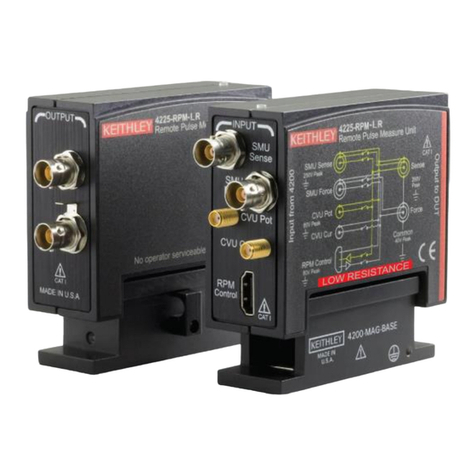
Keithley
Keithley 4225-RPM User manual

Keithley
Keithley 7074 User manual

Keithley
Keithley 7999-2 User manual

Keithley
Keithley 7702 User manual
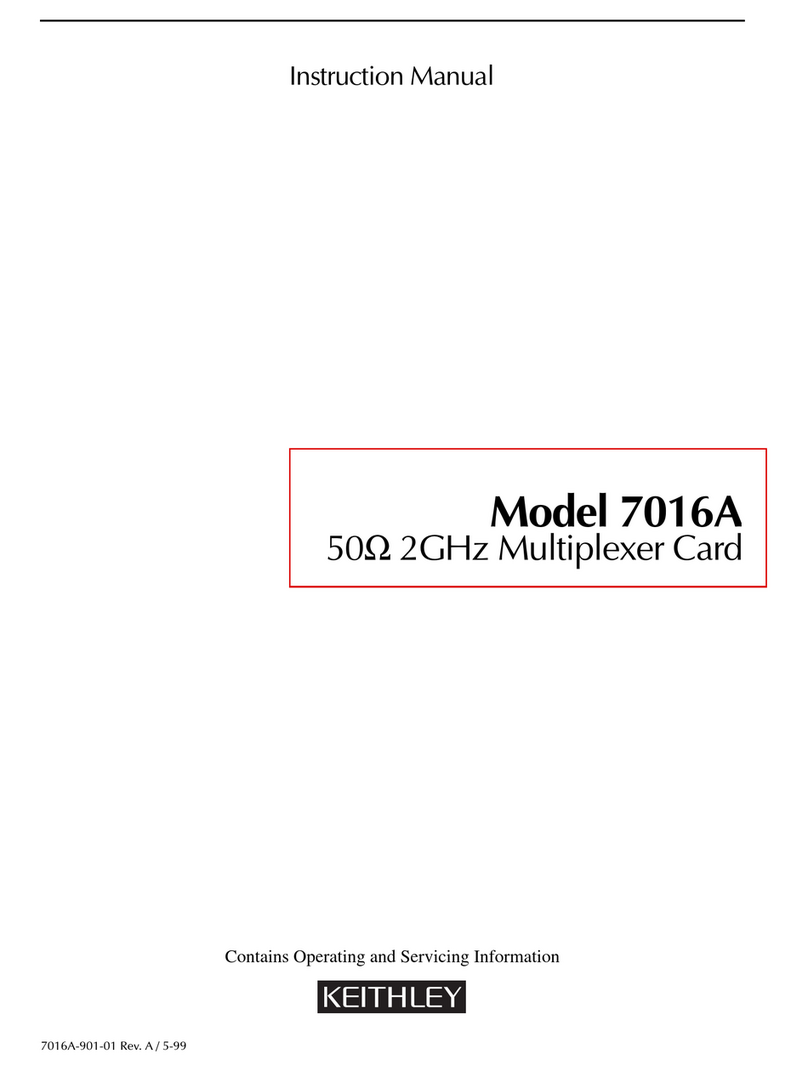
Keithley
Keithley 7016A User manual

Keithley
Keithley 7710 User manual

Keithley
Keithley 7015-S User manual
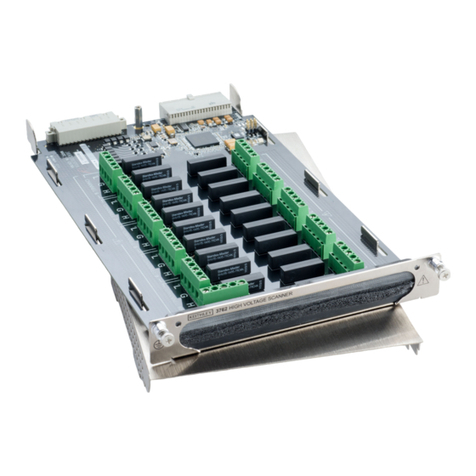
Keithley
Keithley 3706A User manual

Keithley
Keithley 7706 User manual

Keithley
Keithley 7708 User manual
Popular Multiplexer manuals by other brands
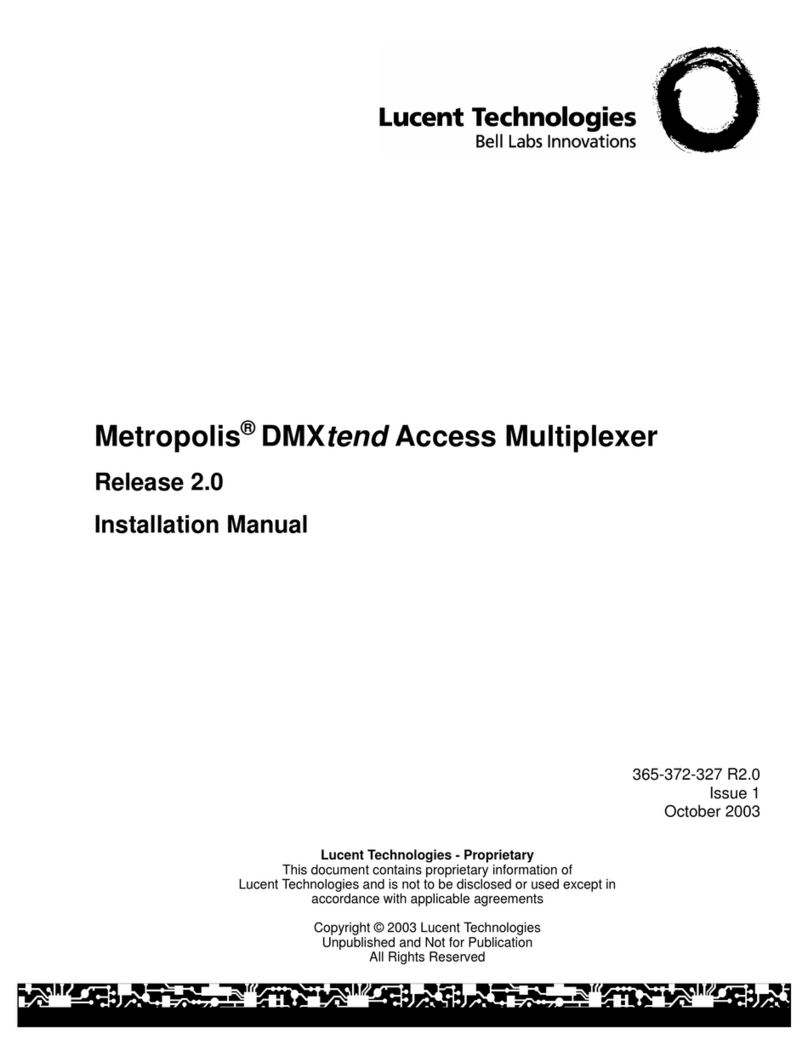
Lucent Technologies
Lucent Technologies Metropolis DMXtend installation manual
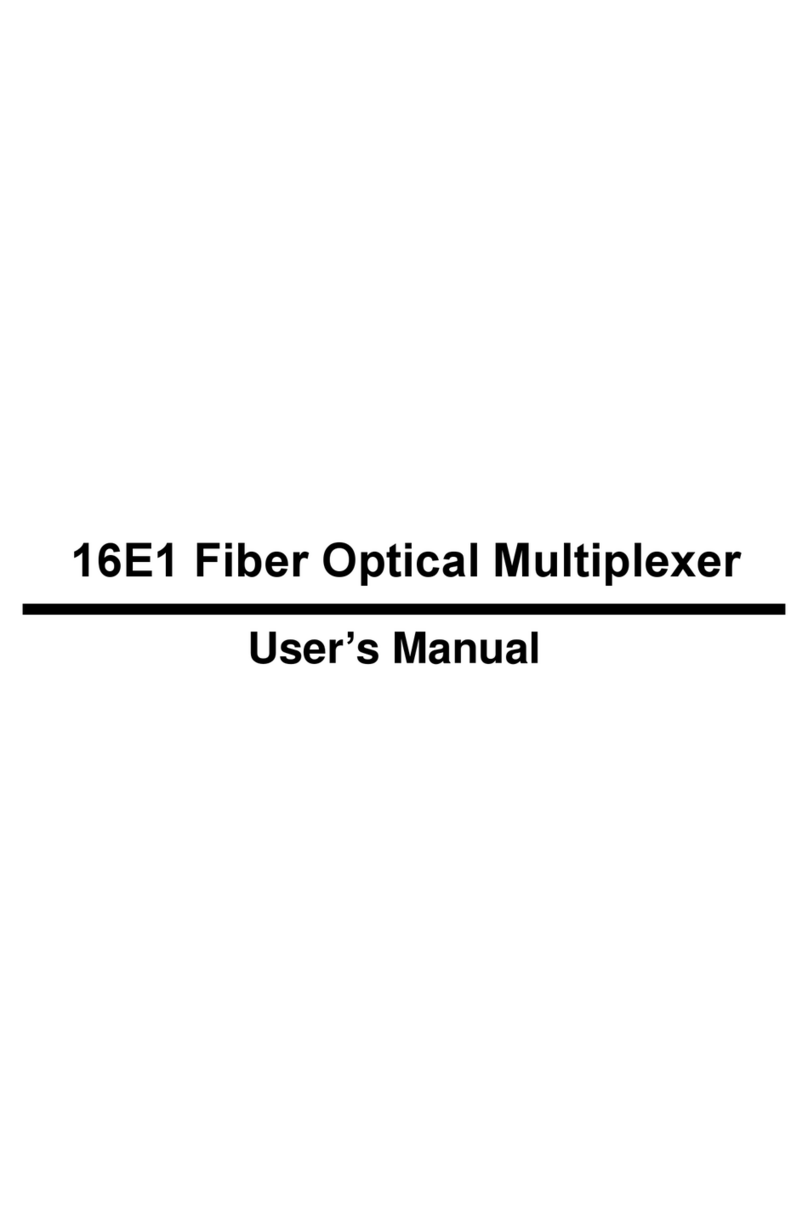
Techroutes
Techroutes 16E1 user manual
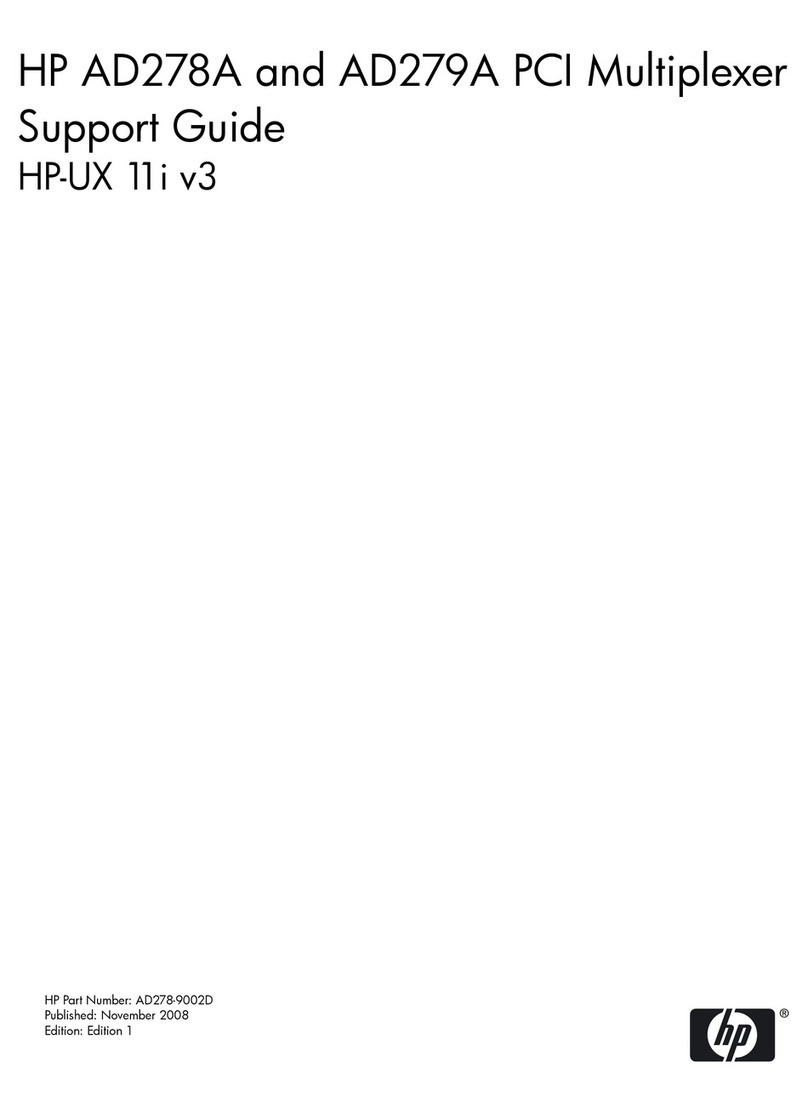
HP
HP AD278A Support guide
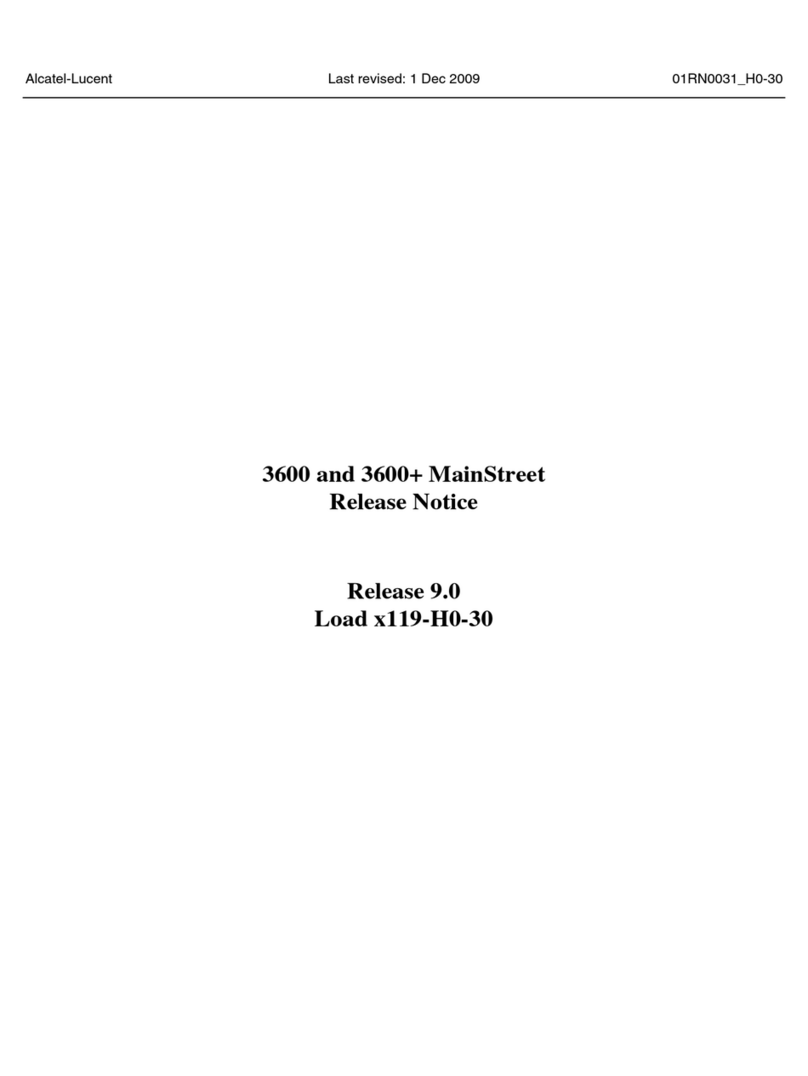
Alcatel-Lucent
Alcatel-Lucent 3600 MainStreet Release notice

Signametrics Corporation
Signametrics Corporation SM4020 Operator's manual
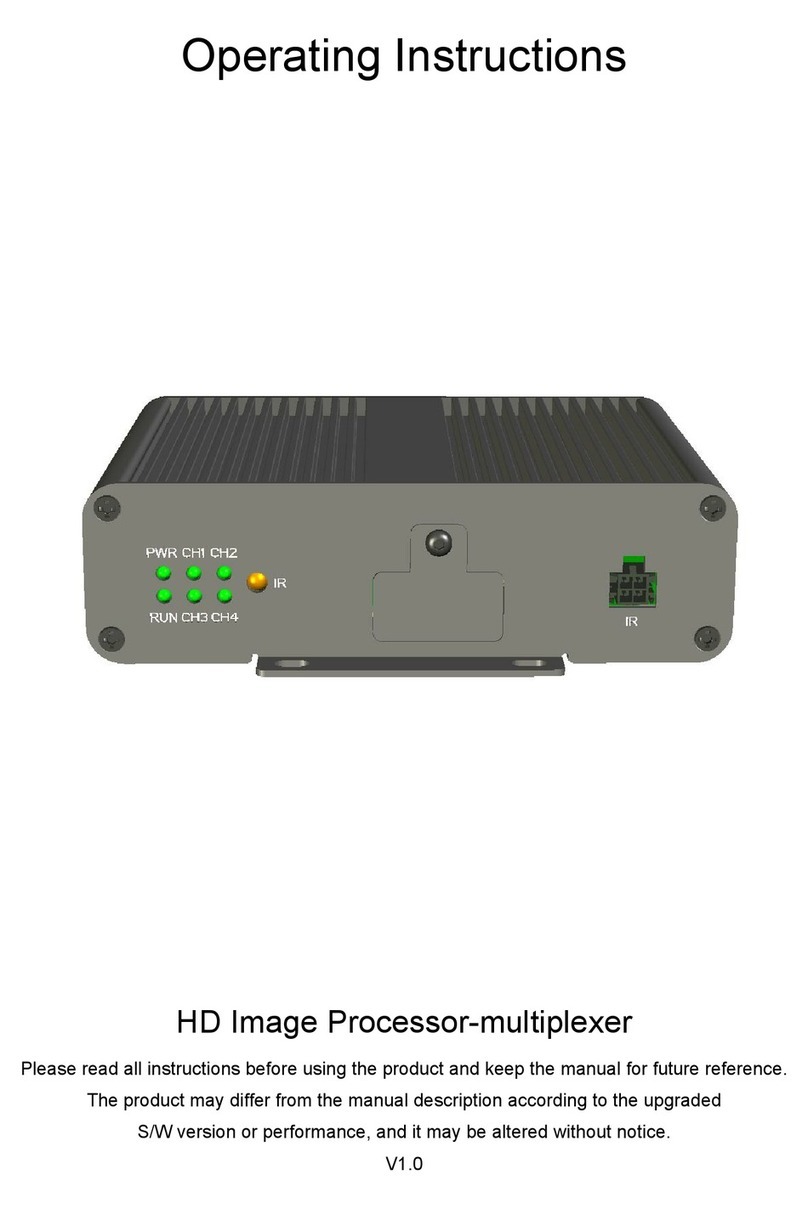
Krautli
Krautli EYESYSTEM RVA 318HD operating instructions


